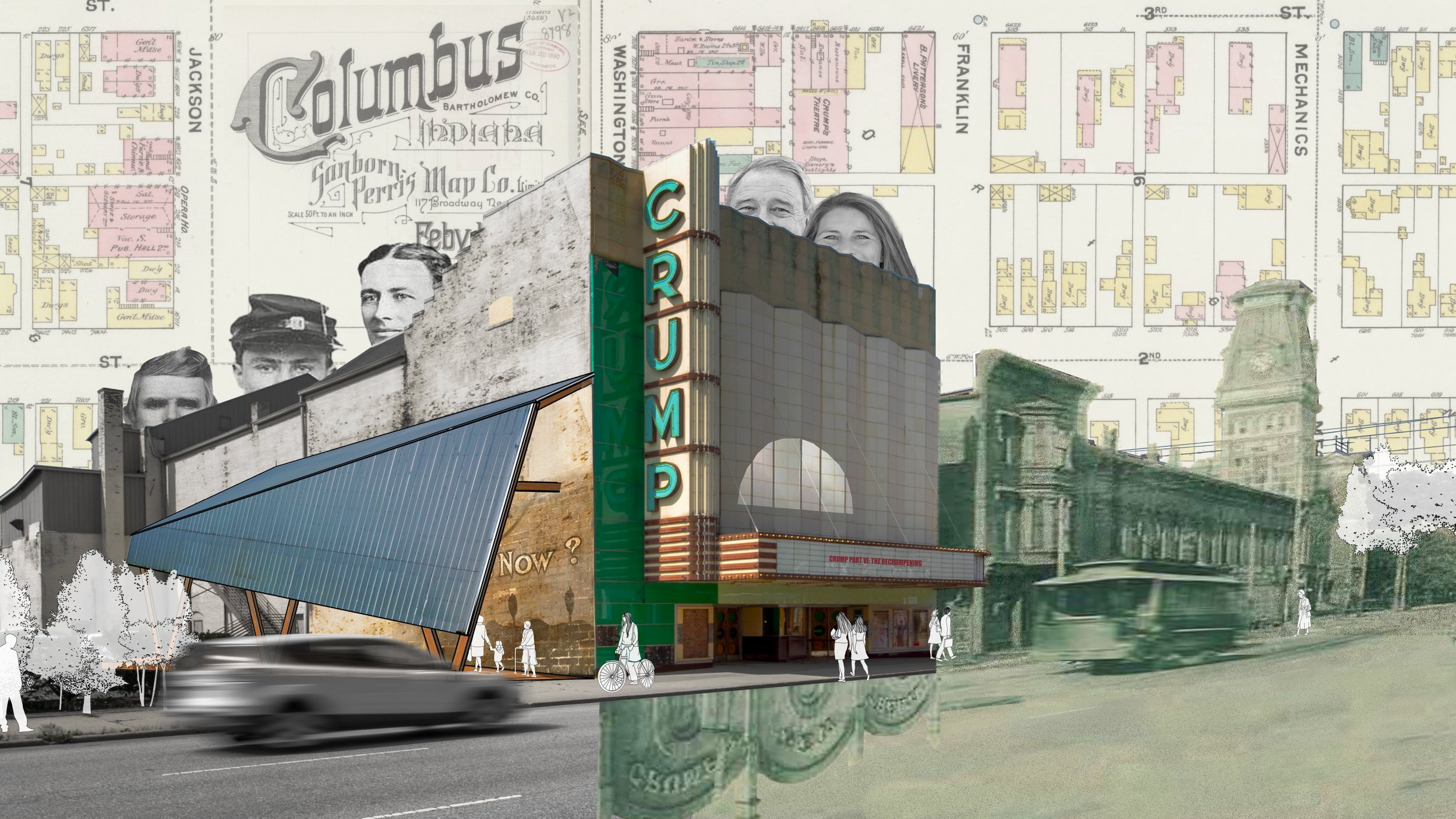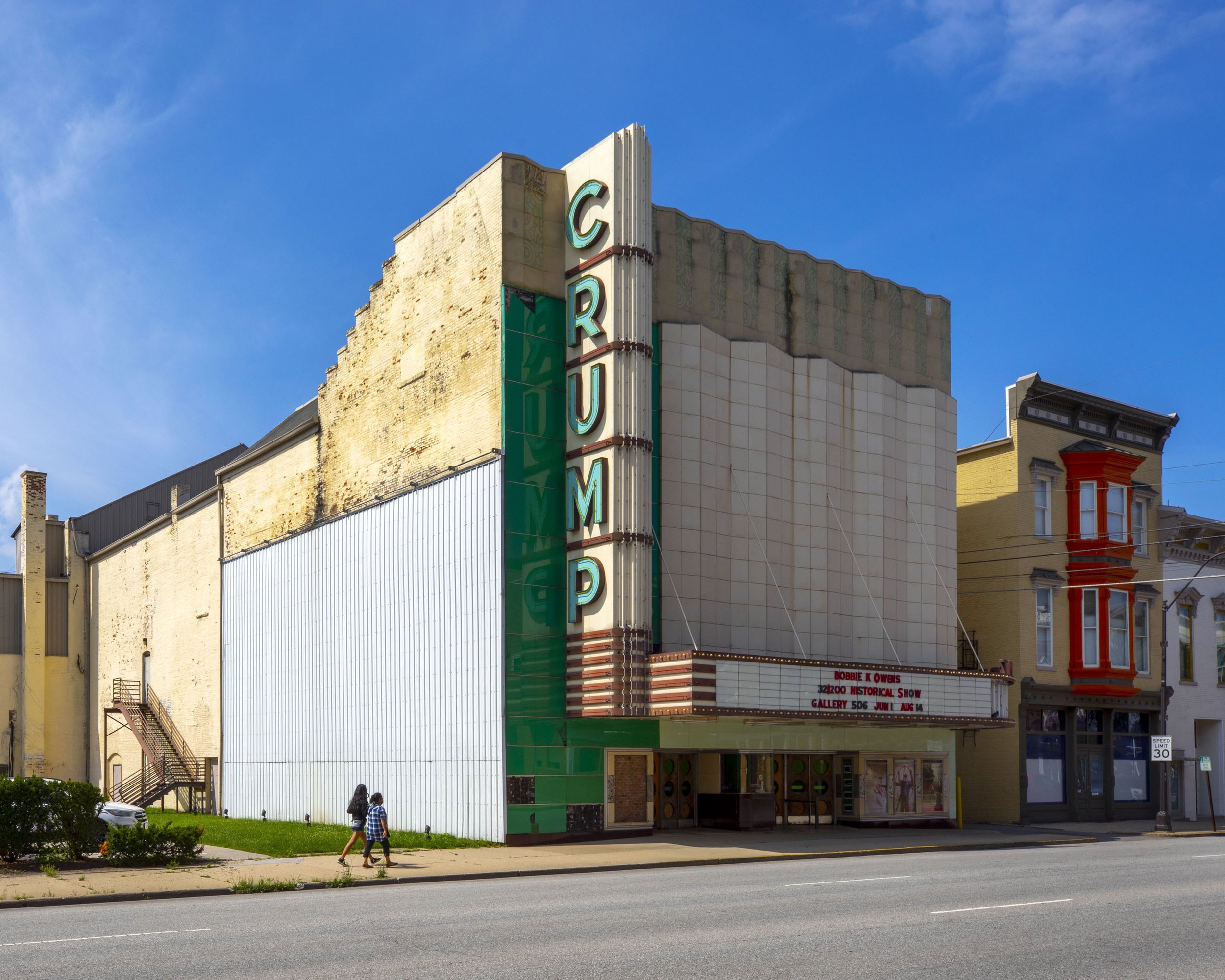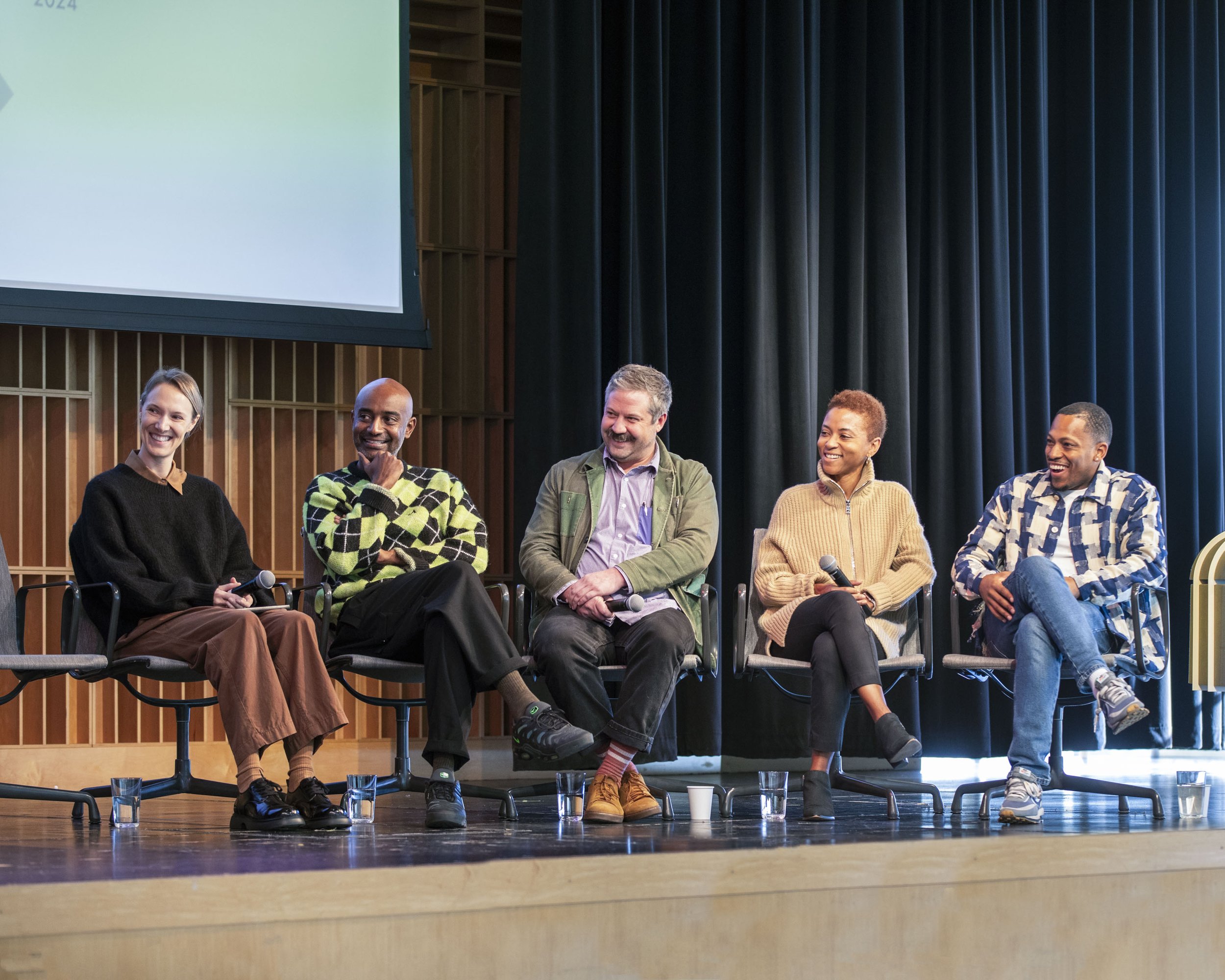
J. Irwin and Xenia S. Miller Prize Recipient
Adaptive Operations
Accessing Nostalgia
Site and Partner: The Crump Theatre
The 136-year-old Crump Theatre is a vessel that holds the collective memory of Columbus, one that is illuminated with the projections of a not-so-distant past. Accessing Nostalgia creates new apertures, literally and metaphorically, within and around The Crump that allows a creative nostalgia to be projected; a nostalgia not for historic reenactment, nor for historic revision, but one that searches for a past perfect that can point to an idealized future. The apertures, or portals are an attempt to peel away and gaze at parts of the building that demonstrate how it has reinvented itself over its history, and how it can continue that pattern in a way that expands its access to arts and culture.
The recent preservation efforts demonstrated by its diverse community of supporters show that The Crump is valued as something other than an obsolete piece of real estate. It shows that it is part of a bigger trajectory and narrative that says this is a community that values arts and culture and will prioritize this in a way that treats its built environment as an active member of that community.
Charlie Vinz
J. Irwin and Xenia S. Miller Prize
Adaptive Operations
Chicago, Illinois
Adaptive Operations was founded in 2013 by Charlie Vinz (pictured) and is focused on cultural production and evolving our shared built environment through architecture, art, design, and education. Adaptive Operations primarily undertakes the adaptive reuse, renovation, and research of existing structures as part of an ongoing strategy to highlight and place a higher value on the embodied carbon in our built environment.
Charlie is a graduate of the Illinois Institute of Technology, where he is currently an adjunct faculty member. He was previously the Creative Director of the Chicago non-profit Rebuilding Exchange and a designer and project manager for Theaster Gates Studio/Rebuild Foundation.
adaptiveoperations.com
Site: The Crump Theatre

2024 Symposium: Adaptive Operations

Previous Work by Adaptive Operations
Buddy
Buddy is a retail/gallery space permanently located on the ground floor of the the Chicago Cultural Center in downtown Chicago. Buddy is a partnership between Public Media Institute and the Department of Cultural Affairs and Special Events, and it provides a space for Chicago-based artists to sell a wide array of wares, as well as a way for tourists to get a sense of the city's artist community outside of downtown. Buddy opened in late spring of 2021 and features regular programming and exhibitions in addition to its retail operations. The design was primarily based on upcycling as many materials as possible from the previous Chicago Architectural Biennial that had been hosted there. The faceted arch is meant to recall the iconic stair and lobby at the entry of the building, and the space utilizes movable furniture and flexibility to make way for the performances, lectures, and other events that now take place there.
Le Museé du le Grand Dehors (The Museum of the Great Outdoors) is a sculptural work that uses a tree as the conceptual lens through which we critically examine and expand our experience of western, human-centered notions of ‘nature’ and environment. The title is drawn from the philosopher Quentin Meillassoux of the speculative realism movement, who refers to le grand dehors as that which reaches outside of possible human perception or knowledge. Many continental philosophers, particularly in the lineage of Kant, argue that human knowledge systems are the center of what is knowable and even “real,” because humans are the only beings capable of dimensional perception/consciousness. It is our interest to generate a work that glimpses the edges of our knowledge by expanding a single form into deep time."
Our museum as sculpture took the form of a small mysterious building clad in raw, smoked rubber shingles, interrupted by a fallen rubber tree from a nearby rubber plantation. When the tree intersects the museum, it transforms to pure carbon having been charcoalized at local charcoal kilns. On the other side of the museum, the rubber tree canopy continues. Along the way, museum "didactics" label the parts of the tree and forest with reminders of the geological time frames we exist within. Once inside the museum, the didactics stop and the visitor is immersed in a cave-like carbon interior, a sort of inverse of its more orthogonally familiar exterior. Lit only with 3 tunnels of natural light, the interior surfaces are made up of a stucco created with the carbon of crushed charcoal.
The project included several months of programming, entitled Forest University, that hosted artists, art historians, forest educators, forest managers, indigenous activists, Muslim and Buddhist thinkers in conversations designed to illuminate and contemplate the relationship between humans and the forest.
Le Museé du le Grand Dehors
Narrow Bridge
Narrow Bridge is a private arts club and residence in the Woodlawn/Washington Park neighborhood of Chicago. Built in 1923 for the B'nai Bezalel congregation, it eventually became the Cosmopolitan Church of Prayer before closing several years ago. The need for denominational spaces of this scale, in the middle of a residential block and neighborhood, has waned in recent decades. However, the need for cultural work space of this scale and in locations like this has always been in short supply, especially in and around the south side of Chicago.
While the general make up of spaces is conducive to being adaptively reused for cultural and residential purposes, a few important shifts had to happen to create accessibility. This happened by moving the primary public entrance to the north elevation of the building, through the side lot. This shift also helps to de-emphasize the symetrical nature of the original design.
The other primary goal of the project was making the building carbon neutral, or net-zero energy. With a combination of geothermal wells dug in the side lot, photovoltaic panels mounted on the roof, and a new super-insulated envelope and windows, the building is designed to meet this goal. Research included indexing all of the materials in the building in order to understand the embodied energy and carbon savings the adaptive reuse process.





















